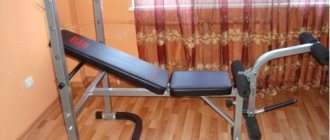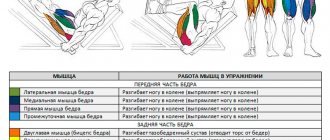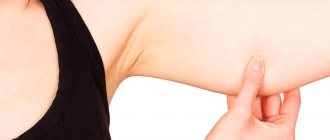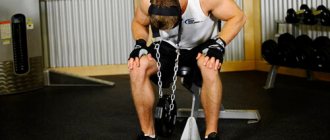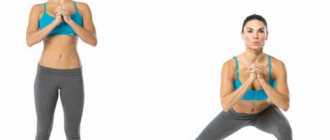There's a good chance that home workouts have become increasingly important as the pandemic has passed. This year's trend is leading to the fact that most people who exercise regularly are at least thinking about a minimum set of home equipment. One of the universal exercise machines for the whole body is the bench press. Yes Yes. On it you can perform not just one bench press, but a whole set of exercises for the whole body. We will look at this further, and also decide on the choice of a suitable bench for the home.
Do you need a bench press bench at home?
Of course, you can do without exercise equipment at all, but if your goal is to gain weight and maintain the tone of all the muscles of the body, then you cannot do without at least one universal exercise machine. For a bench press, you also need dumbbells of various weights or a barbell, but provided that the bench has racks. If you want to develop large pectoral muscles and back, without a bench press it is unlikely to achieve results with push-ups alone.
Getting the most out of a slingshot
I highlight 4 incredible advantages of working in a slingshot:
- Getting used to more weight. What seemed impossible yesterday, today you press 3 times. Gradually, ligaments and joints adapt, which, as you know, do not get used to stress as quickly as muscles.
- Accustoming to weight from the Central Nervous System. When it’s hard, it’s always stress for the body. If you previously bench pressed 140 and this is the limit, then 145 kg is new conditions and new stress. But when in a sling you gradually go beyond +10kg, then +20kg, you push back this maximum weight bar.
- Training the stall and push-up phases of the barbell. If previously dead spots in the bench press prevented you from growing, now, depending on the style and intensity of the press, you can train the barbell break or the push phase.
- It's pure pleasure. A bad athlete is one who does not dream of benching more and more. Here you take on previously unavailable weight, or press your usual weight a few more reps - these are great sensations and they cause delight. We come to the gym to get high.
What types of bench presses are there?
Horizontal
This bench is equipped with two racks for installing a barbell; the distance between them can reach 110 cm. The bench allows for performing bench presses only in a horizontal position. Racks can be either stationary or adjustable. The latter are the most universal.
Straight bench press without racks and with racks
Incline bench press
A bench press with a fixed angle, which averages 45 degrees. In such a bench there is no possibility to adjust the angle of inclination, so the design promotes the development, to a greater extent, only of the upper part of the pectoral muscles.
Adjustable Press Bench
This is the most versatile model of the exercise machine, which makes it possible to perform a number of exercises at any angle - lying down, reclining, sitting.
Each type can have racks for a barbell, bolsters for resting the legs and handles for fixing the body.
Required materials and tools
A homemade design is not considered the safest, but it will cost much less than a ready-made one. To make the bench reliable and durable, you need to use high-quality materials:
- profile pipes 4 x 4 cm for supporting elements;
- steel sheets 2 mm thick for the sunbed;
- sanded board;
- pins for clamps if you plan to raise the backrest;
- bench filler - foam rubber;
- leatherette or thick waterproof textiles for upholstery;
- fasteners: nuts, bolts, door hinge, which secures the lounger to the base.
The tools you will need are a vice, a knife, a drill, a stapler, an angle grinder, a welding machine, and a sharp knife. The finished weight bench needs finishing. Metal elements are coated with special paint to protect against corrosion.
Typically, bench presses are made from metal elements. The material is reliable, durable, can withstand heavy loads, and lasts for many years. In some cases, the simulator is made of wood, but it must be remembered that the bars are not as strong as profile pipes, and their service life is limited.
Wood can only be used to create simple exercise equipment. In this case, it is recommended to additionally strengthen the supports with metal pipes.
Profile pipes
Steel sheets
Sanded board
Foam rubber
Leatherette for upholstery
Fasteners
Tools
Best Adjustable Bench Exercises
Bench press
The most basic exercise for developing the pectoral muscles. Lie down so that your gaze is directed clearly vertically to the barbell. Grasp the bar with a wide grip. Remove the barbell from the racks and place it vertically above your chest. As you inhale, lower the bar to the middle of your chest, and as you exhale, press the bar up, straightening your elbows completely.
Read more about the bench press →
Bench press at an angle
Set the back of the bench at 45 degrees. Sit on a bench and grab the bar with a wide grip. Remove the bar from the racks and, while inhaling, lower the bar onto the clavicular (upper) part of the pectoral muscles. Exhale as you fully extend your elbows.
Read more about the incline barbell press →
Row of two dumbbells at an angle
This exercise develops your back muscles. To perform it, you need to set the bench at 45 degrees. Take dumbbells in both hands, lie on your stomach on the bench, resting your knees on the bend of the structure. Lower your arms freely. As you exhale, pull the dumbbells toward your waist, bringing your shoulder blades together at the top of the movement. As you inhale, slowly lower the dumbbells down.
Read more about two dumbbell rows →
Stepping
This exercise develops the muscles of the legs and buttocks; the abdominal muscles and lumbar extensors work partially in static tension. To perform this, you need to take dumbbells in your hands (you can do it without weight) and place one foot on the bench. As you exhale, you need to push off the bench with your heel and push your whole body up, placing your second leg on the supporting leg on the surface. Then, while inhaling, you need to lower your legs one by one to the floor. The next step is performed on the other leg.
Bulgarian lunges
To perform lunges, you must hold dumbbells in your hands. Stand with your back to the bench, one leg in front is the supporting leg, the other with the toe resting on the height of the bench. The distance from the bench to the supporting leg should be such that when squatting, the knee of the front leg forms a right angle. As you inhale, you need to lower your knee to the floor without bringing the front knee forward beyond the toe. Exhale as you lift up. Repeat on both legs the same number of times.
Read more about Bulgarian lunges →
Seated dumbbell press
Place the back of the bench vertically if necessary for support. Take dumbbells (you can use a barbell) and sit on a bench. Raise the dumbbells toward your shoulders with the backs of your hands facing you. Elbows should move strictly vertically. As you exhale, push the dumbbells up and as you inhale, lower them smoothly.
Read more about the seated dumbbell press →
If you have a barbell, then the press can be performed both in front of you and behind your head. The position of the bar will affect the connection of different delta beams.
Bent over arm extension
The exercise is aimed at developing the triceps and is performed alternately - first on one side, then on the other. Take one dumbbell, with your free hand, rest your other hand and knee on the bench. Align your spine. Raise the elbow of your working arm up, pressing it to your torso, aligning your shoulder line parallel to the floor. As you exhale, straighten your arm without moving your elbow. As you inhale, lower the dumbbell. Then do it on the other hand.
Read more about bent over arm extension →
Curling arms with dumbbells at 45 degrees
Place the back of the bench at a 45 degree angle. Hold dumbbells in both hands. Lie on your back and lower your arms freely. As you exhale, bend your arms alternately, pulling the dumbbells closer to your shoulders. Extend your arms slowly. When lifting, do not move your elbows; only your forearms perform the movement.
Leg Raise
Abdominal training exercise. It is necessary to set the bench horizontally and lie on your back, with your buttocks towards the edge of the bench. Hold the bench with your hands near your head, lift your legs vertically, straightening your knees. As you inhale, slowly lower both legs until they are parallel to the floor, without lifting your lower back. Exhale and return your legs to a vertical position.
Read more about leg raises while lying on a bench →
Book
Sitting on the edge of a bench, grab the edges of the bench with your hands. As you inhale, lean back, rounding your back, and keep your legs suspended. Exhale as you fold, pulling your knees toward your shoulders.
Read more about the exercise book →
Not just spirit
A healthy body is also necessary for a developed mind. Physically undeveloped outstanding scientists, engineers, creative intelligentsia, top managers and businessmen are the exception rather than the rule. Leo Tolstoy at 60 was spinning the sun on a horizontal bar. Niels Bohr, the one in school textbooks, was a famous football player who played for the Danish national team. Things got funny with him: when Bohr was awarded the Nobel Prize in physics, of course, the Copenhagen Tagebladette published a note saying, it’s good, our forward was given a Nobel Prize for football. And a “nerd” in “physics” often turns out to be one in areas of activity that require mental effort.
The abdominal muscles are known to be more difficult to pump than others, because... their ends are not directly connected to the bones. At home, doing abdominal pumping without special equipment, it won’t take long before you get a hernia. Therefore, you need a bench for the press. Structurally, both apparatuses are most often combined into one, with the possibility of conversion for certain sets of exercises.
Sports benches are not technologically complex products. There are enough descriptions of them in RuNet, but more in the spirit of: choose the drawings, and then - this is how you have to saw, pound like this, screw like this. A person who cares about his physical development, as a rule, knows how to operate a tool. But how to choose a prototype so that your training benefits? How to modify it to suit your biomechanics and biometrics? Which sample is more suitable for certain groups of exercises?
This publication is devoted to the questions of how to make a bench for exercises in the preferred direction of physical development with your own hands, using a reasonably chosen model, and then, based on it, a home exercise machine. Those who intend to prove themselves in sports or bodybuilding by working out in it will not be ashamed to come to a well-equipped professional gym. In the meantime, the material is designed for beginner athletes and simply for people who understand: you can and should use the benefits of civilization, but letting them turn you into a twitchy “teapot” or a swollen kettle is wrong.
Note: the problem of home sports activities has recently become more and more acute in rural areas - “physics” is decreasing there, stress is increasing, and a well-equipped gym is sometimes far away.
Recommendations for training
- Train no more often than every 1-2 days. This will be enough for full muscle recovery.
- If the goal is to gain mass, perform all exercises with such weights that a set cannot be completed more than 12 repetitions. To begin with, 3 approaches are enough, over time their number can be increased to 4.
- To maintain muscle tone or relief, as well as lose weight, perform the complex for 15-20 repetitions of 3-4 approaches.


